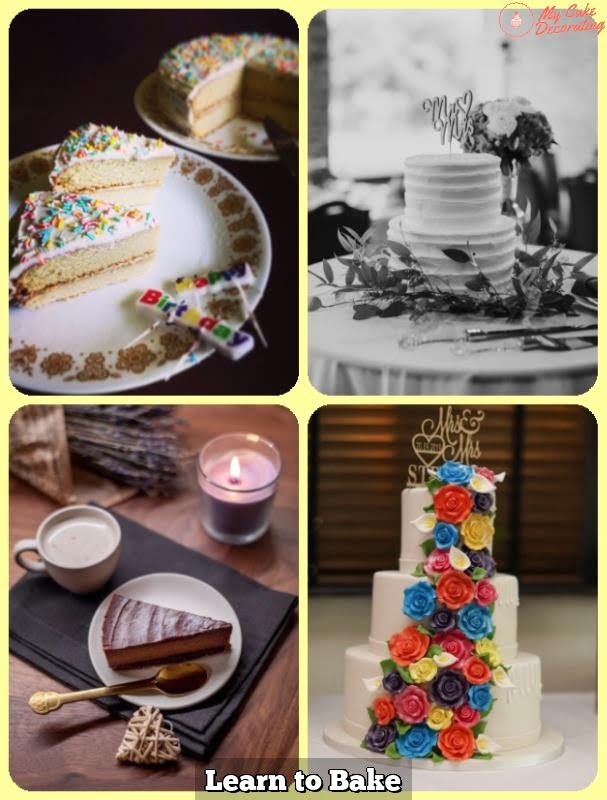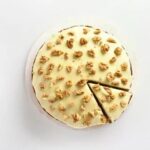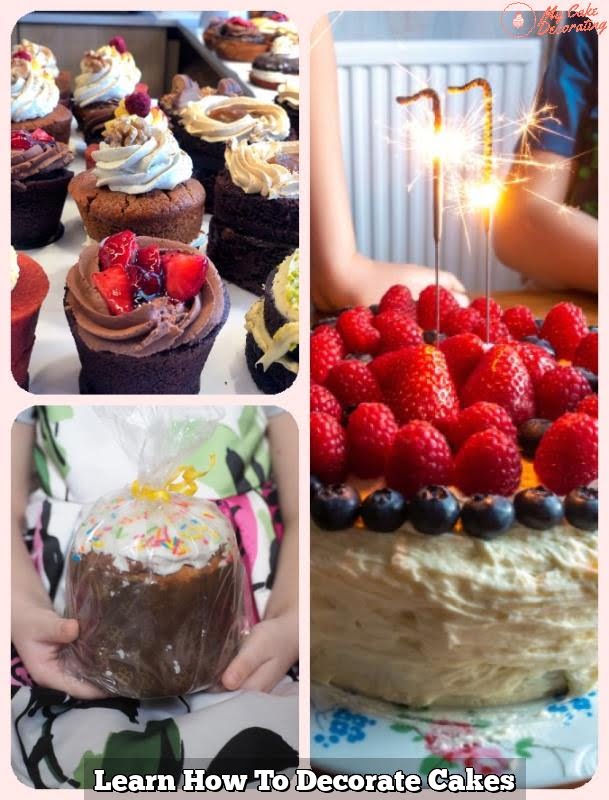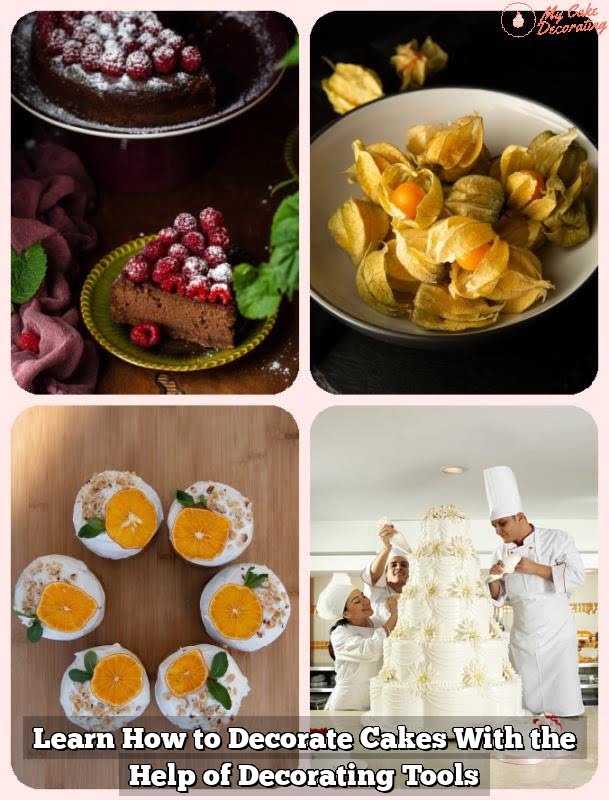Are you looking to learn how to bake and decorate cakes? Whether you’re a complete beginner or hoping to improve your skills, mastering the art of cake making and decorating is both rewarding and enjoyable. From choosing the right ingredients to mastering piping techniques, there’s so much to learn when it comes to creating beautiful and delicious cakes.
In this comprehensive guide, we’ll take you through everything you need to know about baking and decorating cakes. From essential tools and equipment to troubleshooting common issues, we’ll cover it all. By the end of this article, you’ll be equipped with the knowledge and confidence to create stunning cakes for any occasion.
Baking and decorating cakes isn’t just a skill – it’s an art form. With the right guidance and practice, you can elevate your baking skills from amateur level to pro. So let’s dive in and discover the secrets behind creating show-stopping cakes that not only taste amazing but also look incredible with professional-level decorations.
Essential Baking and Decorating Tools
When learning to bake and decorate cakes, having the right tools and equipment is essential for success. Whether you’re a beginner or a seasoned baker, it’s important to have a comprehensive list of must-have items to ensure that your baked creations turn out beautifully. Here are some essential baking and decorating tools that every aspiring baker should have in their kitchen:
Baking Essentials
In order to start baking delicious cakes, it’s crucial to have basic baking essentials such as measuring cups and spoons, mixing bowls, cake pans (in various shapes and sizes), an electric mixer or stand mixer, and a reliable oven thermometer. These tools will ensure accurate measurements and even baking, leading to perfectly baked cakes every time.
Decorating Tools
When it comes to decorating cakes, having the right tools can make all the difference. Some essential decorating tools include offset spatulas for smoothing frosting, piping bags and tips for creating intricate designs, a turntable for easy cake decorating, a bench scraper for achieving clean edges, and a cake leveler for evenly slicing cake layers. These tools will help you achieve professional-looking decorative finishes on your cakes.
Specialty Equipment
In addition to basic baking and decorating tools, there are some specialty items that can take your cake creations to the next level. These may include fondant rollers and cutters for working with fondant icing, edible luster dusts for adding shimmer to decorations, and a cake decorating airbrush kit for creating stunning airbrushed designs. While these items are not necessarily essential for beginners, they can add an extra element of creativity to your cake decorating repertoire.
By investing in these essential baking and decorating tools, you can equip yourself with everything you need to embark on your journey in mastering the art of creating beautifully baked and decorated cakes. With the right equipment at your disposal, you’ll be well-prepared to tackle new recipes and techniques with confidence.
Baking Basics
Baking is both an art and a science, and understanding the basics is essential for creating delicious and beautifully baked cakes. In this section, we will explore the fundamental components of baking, including ingredients, measurements, and techniques.
Understanding Ingredients
One of the first steps to mastering the art of baking is understanding the role that each ingredient plays in a recipe. From flour to eggs to leavening agents, each component contributes to the texture, flavor, and structure of the cake. For example, flour provides structure, while sugar adds sweetness and moisture. Learning about these ingredients will help you make informed decisions about substitutions and adjustments in your recipes.
Measurements and Baking Techniques
Accurate measurements are crucial in baking to ensure consistent results. Understanding the difference between measuring methods (such as scooping versus spooning flour) can significantly impact your final product. Additionally, familiarizing yourself with various baking techniques-such as creaming butter and sugar or folding in egg whites-will help you achieve the perfect texture and rise in your cakes.
Exploring Different Baking Methods
Beyond traditional oven baking, there are various methods such as steam baking which involves using an oven-safe pot filled with boiling water placed on a lower rack mimicking brick ovens from previous centuries. Another trendy method is Dutch oven baking; not only can it be used to bake bread outdoors but also delectable cakes with caramelized crusts thanks to enamel-covered cast iron dutch ovens.
Mastering these foundational aspects of baking will serve as a solid groundwork for honing your skills in creating delectable cakes that not only taste great but also have an exquisite presentation.
Cake Decorating Techniques
When it comes to cake decorating, there are a variety of techniques that can take your baked creations to the next level. Whether you’re a beginner or an experienced baker, mastering these techniques can help you create beautifully decorated cakes that will wow your friends and family. Here are some step-by-step guides for frosting, piping, and creating decorative designs:
1. Frosting: The first step in decorating a cake is applying the frosting. To achieve a smooth finish, start by applying a thin layer of frosting, also known as a crumb coat, and then refrigerate the cake for 15-30 minutes before applying the final layer of frosting.
2. Piping: Using a piping bag and different tips, you can create intricate designs on your cakes. Practice with different tips to create different shapes and textures, such as stars, rosettes, shells, or even writing with frosting.
3. Creating Decorative Designs: There are countless ways to decorate cakes, from simple designs like sprinkles and edible glitter to more complex designs like fondant flowers or chocolate ganache drizzles. Experiment with different tools and ingredients to create unique and eye-catching designs for your cakes.
By mastering these cake decorating techniques, you’ll be able to elevate your baking skills and create beautiful works of edible art that are sure to impress. Remember that practice makes perfect, so don’t be afraid to experiment with different techniques until you find what works best for you.
Choosing the Right Cake Recipes
When it comes to baking and decorating cakes, one of the most important decisions is choosing the right cake recipe. Whether you are a beginner or an experienced baker, selecting a recipe that suits your skill level and taste preference is crucial for creating a delicious and visually appealing cake. Here are some tips for choosing the perfect cake recipe:
- Consider Your Skill Level: If you’re new to baking, start with simple recipes that use basic ingredients and techniques. Look for recipes with clear instructions and minimal steps. As you gain more experience, you can gradually challenge yourself with more complex recipes.
- Take Your Taste Preference into Account: Think about the flavor profile you want for your cake. Whether it’s a classic vanilla or chocolate cake, a fruity and light sponge, or a rich and indulgent dessert, there are endless options to choose from. Consider the occasion and personal preferences of those who will be enjoying the cake.
- Explore Different Types of Cakes: There are various types of cakes – butter cakes, sponge cakes, chiffon cakes, and more. Each type has its own unique characteristics and baking requirements. Research different types of cakes to understand their differences and choose the one that aligns with your skill level and taste preference.
By taking these factors into consideration when selecting a cake recipe, you can ensure that your baking experience is enjoyable and rewarding. Remember to also have fun experimenting with different flavors, fillings, and frostings to create a cake that truly reflects your creativity and personal touch.
Practice Makes Perfect
Now that you have learned the essential baking and decorating tools, mastered the baking basics, and familiarized yourself with various cake decorating techniques, it’s time to focus on honing your skills. The key to becoming a proficient baker and decorator is consistent practice. Whether you are a beginner or have some experience in the kitchen, these strategies will help you improve your craft.
First, set aside dedicated time for practice. Repetition is crucial in mastering any skill, including baking and cake decorating. Schedule regular practice sessions where you can experiment with new recipes, try different decorating techniques, and learn from your mistakes. By consistently working on your craft, you will gradually build confidence and expertise in creating beautifully crafted cakes.
Next, seek feedback from others. Share your baked goods with family and friends and ask for their honest opinions. Constructive criticism can be incredibly valuable in identifying areas for improvement. Additionally, consider joining a baking or cake decorating community either online or in-person. Engaging with fellow enthusiasts can provide inspiration, support, and valuable insights into refining your skills.
Lastly, challenge yourself with new projects. As you become more comfortable with basic recipes and decorating techniques, don’t be afraid to push yourself out of your comfort zone. Try tackling more complex recipes or experimenting with intricate designs. Embracing challenges will not only help you grow as a baker and decorator but also keep the learning process exciting and rewarding.
| Strategies | Benefits |
|---|---|
| Dedicated Practice Time | Consistent skill development |
| Seeking Feedback | Identifying areas for improvement |
| Challenging Yourself | Growth as a baker and decorator |
Troubleshooting Common Issues
Baking and decorating cakes can be a fun and rewarding hobby, but it’s not without its challenges. Even the most experienced bakers encounter issues from time to time. Fortunately, many common problems have simple solutions that can help you salvage your creations and improve your skills in the process.
One common issue that many bakers face is cakes that come out of the oven with uneven or lopsided tops. This can make it difficult to stack and frost layers evenly. To prevent this problem, try using cake strips or even strips of fabric soaked in water and wrapped around the cake pans before baking. This helps the cake bake more evenly and reduces the chance of a domed top.
Another frustrating challenge is frosting that is too runny or too stiff. If your frosting seems too thin, try adding powdered sugar a little bit at a time until you reach the desired consistency. On the other hand, if your frosting is too stiff, add small amounts of milk or cream until it reaches the right texture. It’s important to make adjustments slowly to avoid overcompensating for the issue.
Lastly, air bubbles in your cake batter can result in unsightly holes throughout your finished cake. To prevent this, tap the filled cake pans on a hard surface several times before placing them in the oven to release any trapped air bubbles. You should also stir your batter gently to avoid incorporating excess air as much as possible.
By learning how to troubleshoot these common issues, you’ll be better equipped to handle any challenges that arise during the baking and decorating process. With practice and patience, you’ll become more confident in your abilities and enjoy consistently successful results with your delicious creations.
Showcasing Your Creations
When it comes to showcasing your beautifully baked and decorated cakes, presentation is key. A well-photographed cake can make all the difference in how your creations are perceived. One of the most important aspects of photographing your cakes is lighting. Natural light is best for capturing the true colors and details of your cake. If natural light is not available, investing in a good quality photography lighting kit can also work wonders.
In addition to lighting, the background and props used in your cake photographs can greatly enhance the overall presentation. Consider using a clean, simple backdrop or interesting textured surfaces that complement the theme of your cake. It’s also a good idea to include props such as cake stands, fresh flowers, or themed decor to add visual interest to your photos.
Once you have captured stunning images of your cakes, it’s time to consider how you will present them online or in person. For online platforms such as social media or a personal website, choose high-quality images that showcase the best angles and details of your cakes.
Consider creating a cohesive aesthetic by maintaining a consistent editing style and color scheme for your cake photos. When presenting your cakes in person at events or for clients, invest in professional-looking display stands and packaging that reflect the quality of your creations.
| Photography Tips | Presenting Your Cakes |
|---|---|
| Use natural light or invest in a photography lighting kit | Invest in professional-looking display stands and packaging |
| Select clean backdrops or textured surfaces for background | Consider creating a cohesive aesthetic for online presentation |
| Include props like cake stands or fresh flowers for visual interest | Choose high-quality images that showcase the best angles and details |
Conclusion
In conclusion, learning to bake and decorate cakes is an art that requires patience, practice, and a willingness to learn from both successes and failures. By mastering essential baking and decorating tools, understanding the basics of baking, and experimenting with different cake recipes, you can develop the skills needed to create stunning and delicious treats.
Furthermore, practicing different cake decorating techniques such as frosting, piping, and creating decorative designs will help you hone your craft and become more confident in your abilities. It’s important to remember that perfection takes time and dedication, so don’t be discouraged by early mistakes. Instead, use them as learning opportunities to improve your skills.
Finally, as you continue on your journey in mastering the art of baking and decorating cakes, don’t forget to showcase your creations. By photographing and presenting your beautifully baked and decorated cakes, you can share your passion with others and possibly even inspire them to embark on their own baking adventures. Whether it’s for personal enjoyment or professional aspirations, the joy of baking and decorating cakes is something that can be shared with others for years to come.
Frequently Asked Questions
Can I Teach Myself to Decorate Cakes?
Teaching yourself to decorate cakes is definitely possible with the right resources and motivation. There are plenty of online tutorials, classes, and books available that can help you learn the necessary techniques and skills. Starting with simple designs and gradually working your way up to more complex ones can be a great way to build your confidence and expertise.
What Do You Need to Start Baking and Decorating Cakes?
To start baking and decorating cakes, you will need basic baking equipment such as measuring cups, mixing bowls, a mixer, cake pans, and an oven. For cake decorating, you will need tools like piping bags, tips, spatulas, a turntable, and food coloring.
Additionally, ingredients like flour, sugar, eggs, butter, powdered sugar (for frosting), and flavorings are essential for both baking and decorating.
Is Cake Decorating Hard to Learn?
Cake decorating can be challenging to learn at first, especially if you’re new to it. It requires patience and practice to master various techniques such as icing consistency, piping flowers or designs, and creating smooth fondant surfaces.
However, with dedication and the willingness to learn from mistakes, it is definitely possible to become proficient in cake decorating over time. Taking small steps and not being too hard on yourself during the learning process can make it much more manageable.

Welcome to my blog about home and family. This blog is a place where I will share my thoughts, ideas, and experiences related to these important topics. I am a stay-at-home mom with two young children. I hope you enjoy reading it! and may find some helpful tips and ideas that will make your home and family life even better!





